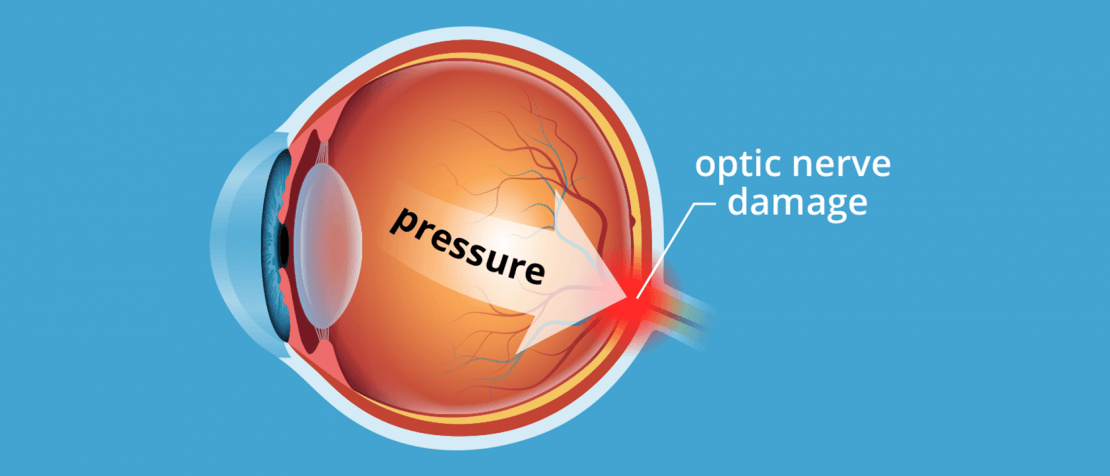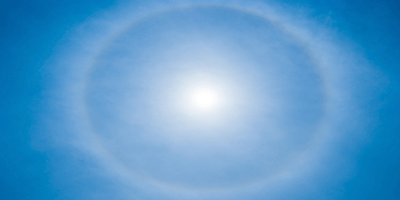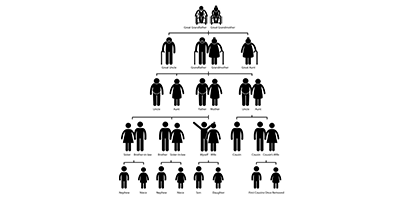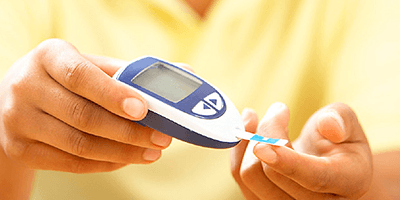
Glaucoma is one of the most common causes of irreversible blindness in the world. It frequently occurs when fluid in the eye is unable to drain and the amount of pressure in the eyeball itself is increased beyond what is normal, resulting in irreversible nerve damage. The most common types of glaucoma are acute angle-closure, where the angle between the iris and cornea closes and prevents proper drainage of eye fluid, and open-angle, where the eye’s drainage canals become clogged over time and pressure builds. Recognizing the symptoms of acute angle-closure and open-angle glaucoma, as well as understanding your risk factors, can help ensure that you get proper treatment and avoid further damage to your eyes that may result in blindness.
So here are the 15 easy ways to know if you’re at risk
1. Notice any blind spots.
 As your nerves become increasingly more damaged, blind spots will develop in your field of vision. Blind spots are exactly what they sound like, areas in your vision where you are unable to see things. Eventually, the nerve damage becomes so severe that you lose your vision entirely. If you notice any blind spots, talk to your doctor immediately.
As your nerves become increasingly more damaged, blind spots will develop in your field of vision. Blind spots are exactly what they sound like, areas in your vision where you are unable to see things. Eventually, the nerve damage becomes so severe that you lose your vision entirely. If you notice any blind spots, talk to your doctor immediately.
2. Pay attention to a loss of peripheral vision.
 With open-angle glaucoma, you will eventually notice a loss of peripheral or side vision. Objectives at the edges of your vision will become increasingly less clear and more difficult to define. As the glaucoma worsens, your vision will narrow and you will only be able to see things directly in front of you. The resulting loss of vision will come to resemble tunnel vision.
With open-angle glaucoma, you will eventually notice a loss of peripheral or side vision. Objectives at the edges of your vision will become increasingly less clear and more difficult to define. As the glaucoma worsens, your vision will narrow and you will only be able to see things directly in front of you. The resulting loss of vision will come to resemble tunnel vision.
3. Notice a sudden blurring of vision.
 The sudden onset of hazy or blurred vision may be a symptom of acute angle-closure glaucoma. You will notice a general fuzziness in your vision and a general lack of clarity in the things you see. This may also be normal eye deterioration, myopia or hyperopia. Be sure to visit your doctor if your vision quickly changes.
The sudden onset of hazy or blurred vision may be a symptom of acute angle-closure glaucoma. You will notice a general fuzziness in your vision and a general lack of clarity in the things you see. This may also be normal eye deterioration, myopia or hyperopia. Be sure to visit your doctor if your vision quickly changes.
4. Pay attention to sudden nausea and vomiting.
 If you are suffering from acute angle-closure glaucoma, you may rapidly become ill and vomit. This is a result of the increased pressure in your eyes causing dizziness, resulting in nausea. If you begin experiencing persistent nausea and vomiting, be sure to visit your doctor.
If you are suffering from acute angle-closure glaucoma, you may rapidly become ill and vomit. This is a result of the increased pressure in your eyes causing dizziness, resulting in nausea. If you begin experiencing persistent nausea and vomiting, be sure to visit your doctor.
5. Look for light halos or rainbows.
 You may notice vibrant halo or rainbow-like circles that appear around sources of light. These are due to increased pressure in your eye distorting your vision and may occur suddenly. These symptoms may appear if lights are dimmed or if it is dark.
You may notice vibrant halo or rainbow-like circles that appear around sources of light. These are due to increased pressure in your eye distorting your vision and may occur suddenly. These symptoms may appear if lights are dimmed or if it is dark.
6. Notice if your eyes are red.
 Eye redness is very common and happens when blood vessels swell inside the eye, making the sclera, or the white part of the eye, turn red. However, if you are suffering from glaucoma, the blood vessels may be swollen because of increased pressure in the eyes. If you notice redness accompanied by any of the other symptoms, visit your doctor immediately.
Eye redness is very common and happens when blood vessels swell inside the eye, making the sclera, or the white part of the eye, turn red. However, if you are suffering from glaucoma, the blood vessels may be swollen because of increased pressure in the eyes. If you notice redness accompanied by any of the other symptoms, visit your doctor immediately.
7. Pay attention to eye pain and headache.
 In the early stages of acute angle-closure glaucoma, you may experience a general discomfort or soreness in your eye. If untreated, the increased pressure in your eye will result in severe pain and possibly an intense headache. If you have intense eye and head pain, accompanied by any other symptoms, visit your doctor immediately.
In the early stages of acute angle-closure glaucoma, you may experience a general discomfort or soreness in your eye. If untreated, the increased pressure in your eye will result in severe pain and possibly an intense headache. If you have intense eye and head pain, accompanied by any other symptoms, visit your doctor immediately.
8. Report a sudden loss of vision in one or both eyes.
 In the advanced stages of acute angle-closure glaucoma, you may experience sudden vision loss. This is the result of sever nerve damage due to increased eye pressure. If you lose vision, visit a doctor immediately.
In the advanced stages of acute angle-closure glaucoma, you may experience sudden vision loss. This is the result of sever nerve damage due to increased eye pressure. If you lose vision, visit a doctor immediately.
9. Know that your family history could be to blame.
 Unfortunately, glaucoma, particularly open-angle, is likely genetic. You are more likely to have the disease if someone in your family is suffering from it. However, that does not mean that you are guaranteed to develop it. If you have a family history of glaucoma, be sure to see an eye specialist regularly to monitor for the disease. Even if glaucoma is inevitable, you can slow its progress.
Unfortunately, glaucoma, particularly open-angle, is likely genetic. You are more likely to have the disease if someone in your family is suffering from it. However, that does not mean that you are guaranteed to develop it. If you have a family history of glaucoma, be sure to see an eye specialist regularly to monitor for the disease. Even if glaucoma is inevitable, you can slow its progress.
10. Recognize that age is a factor.
 Those over the age of 50 have a greater risk of developing glaucoma. As you get older, your body is less capable of regulating normal functions, like maintaining proper eyeball pressure. If you are over the age of 40, be sure to receive regular eye exams and get checked for glaucoma.
Those over the age of 50 have a greater risk of developing glaucoma. As you get older, your body is less capable of regulating normal functions, like maintaining proper eyeball pressure. If you are over the age of 40, be sure to receive regular eye exams and get checked for glaucoma.
11. Be aware that your race may make you more susceptible.
 In the United States, glaucoma is about five times more common for African Americans than for other ethnic groups. Although it is unclear why the African American community has higher rates of glaucoma, there is some evidence pointing to genetic factors. Environmental factors, such as diet and access to health care, may also play an important role. African Americans over 40 years old have a greater risk of getting glaucoma, and African American women are more likely to have the disease than men.
In the United States, glaucoma is about five times more common for African Americans than for other ethnic groups. Although it is unclear why the African American community has higher rates of glaucoma, there is some evidence pointing to genetic factors. Environmental factors, such as diet and access to health care, may also play an important role. African Americans over 40 years old have a greater risk of getting glaucoma, and African American women are more likely to have the disease than men.
12. Know that diabetes plays a role.
 A recent study found that those with diabetes had a 35 percent increase risk of developing glaucoma. This is due, in part, to the fact that diabetes damages the blood vessels in the retina, leading to irreparable nerve damage. If you have diabetes, be sure to let your optometrist know so that they can monitor your eyes for increased pressure or possible nerve damage.
A recent study found that those with diabetes had a 35 percent increase risk of developing glaucoma. This is due, in part, to the fact that diabetes damages the blood vessels in the retina, leading to irreparable nerve damage. If you have diabetes, be sure to let your optometrist know so that they can monitor your eyes for increased pressure or possible nerve damage.
13. Realize that poor vision might cause glaucoma.
 Myopia, or nearsightedness, and hyperopia, or farsightedness, can both be indicators for glaucoma. This may be due to the shape of the eye and its ability to drain properly.
Myopia, or nearsightedness, and hyperopia, or farsightedness, can both be indicators for glaucoma. This may be due to the shape of the eye and its ability to drain properly.
14. Know that steroid or cortisone use might cause the disease.
 Those who use regularly and consistently use certain topical ocular (eye drops) and dermatological (creams) steroids over a long time may be more likely to develop glaucoma. If used regularly over an extended period, steroid eye drops can cause increased pressure inside the eye. If you are prescribed any of these steroids, be sure to use them as recommended and receive regular eye checks.
Those who use regularly and consistently use certain topical ocular (eye drops) and dermatological (creams) steroids over a long time may be more likely to develop glaucoma. If used regularly over an extended period, steroid eye drops can cause increased pressure inside the eye. If you are prescribed any of these steroids, be sure to use them as recommended and receive regular eye checks.
15. Understand that eye injury or surgery increases your risk.
 Previous injuries or surgeries involving the eye can cause nerve damage and impact fluid drainage. Examples of eye problems are retinal detachment, eye inflammations and eye tumors. Complications from eye surgery can also lead to glaucoma. Because of this, be careful with your eyes! Always wear protective gear when necessary and follow doctor’s orders when it comes to pre- and post-surgery protocol.
Previous injuries or surgeries involving the eye can cause nerve damage and impact fluid drainage. Examples of eye problems are retinal detachment, eye inflammations and eye tumors. Complications from eye surgery can also lead to glaucoma. Because of this, be careful with your eyes! Always wear protective gear when necessary and follow doctor’s orders when it comes to pre- and post-surgery protocol.
Schedule regular eye exams
Open-angle glaucoma leads to the gradual deterioration of your vision over an extended period of time, usually years. Most people suffering from open-angle fail to notice symptoms until the glaucoma is very advanced and nerve damage has occurred because open-angle develops so slowly and stealthily.
It is important to schedule eye examines every year, especially if you are over the age of 40 or have a family history of glaucoma.
Open-angle is the most common type of glaucoma in the United States, affecting roughly 4 million people.
Realize that nerve damage is permanent. If you suffer from open-angle glaucoma, there is unfortunately no cure and, once symptoms have presented, significant nerve damage has occurred. Although your doctor may be able to slow the deterioration, the damage done to your vision is largely irreversible.
If you have experienced any of these risk factors or symptoms before, you should visit the eye doctor. If you have any further questions, ask us in the comment box. Take a moment to watch the video below.

I have been experiencing blurry vision and find it difficult to read especially in the evening.